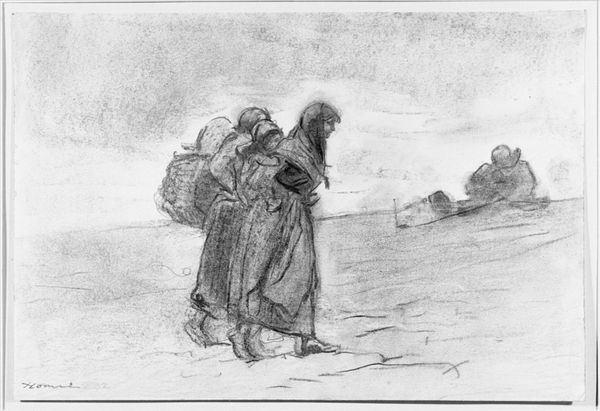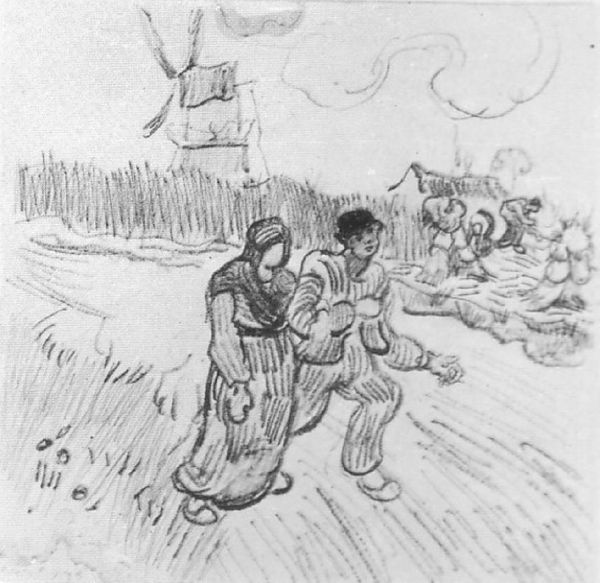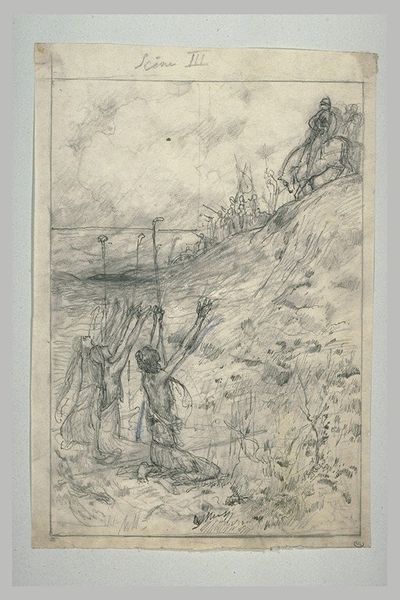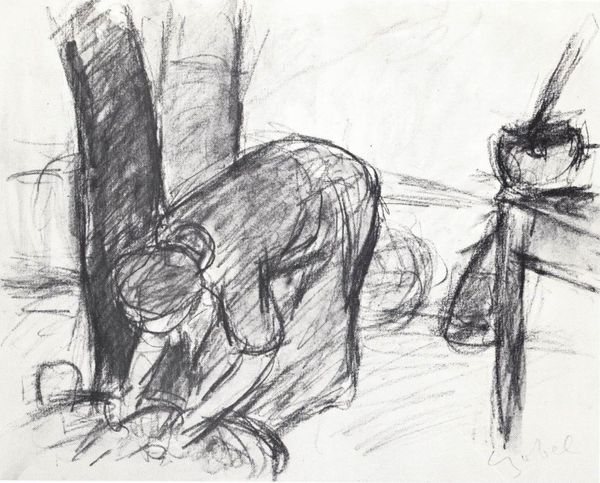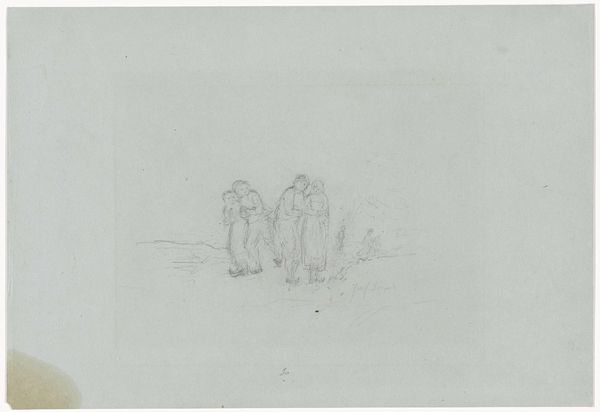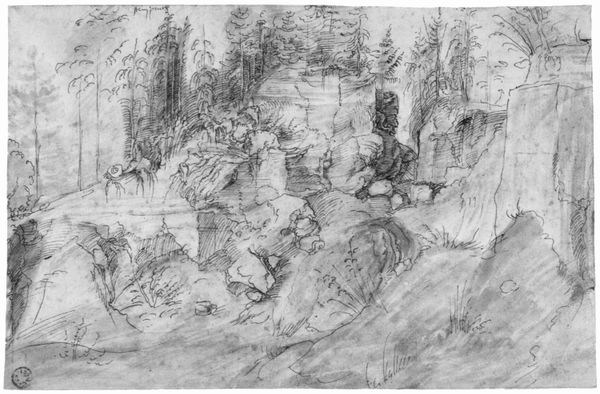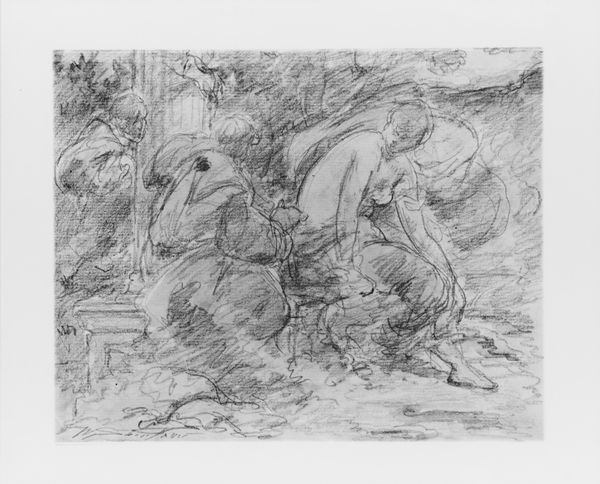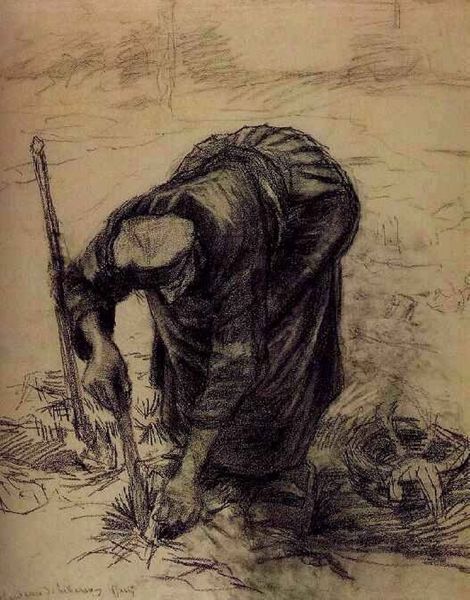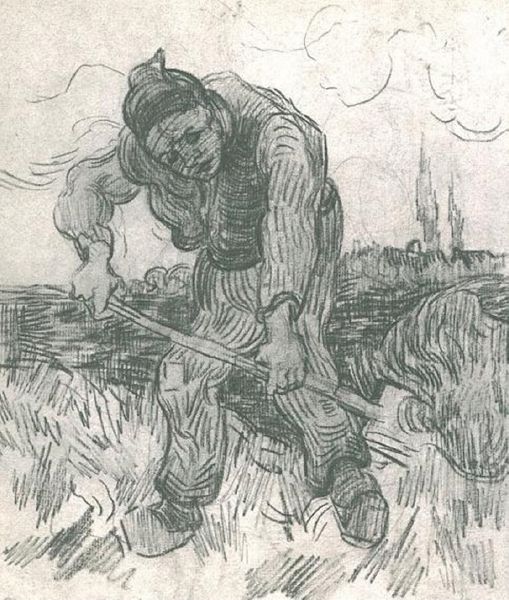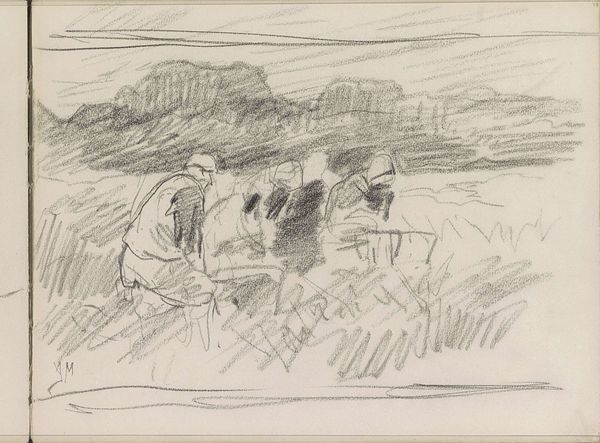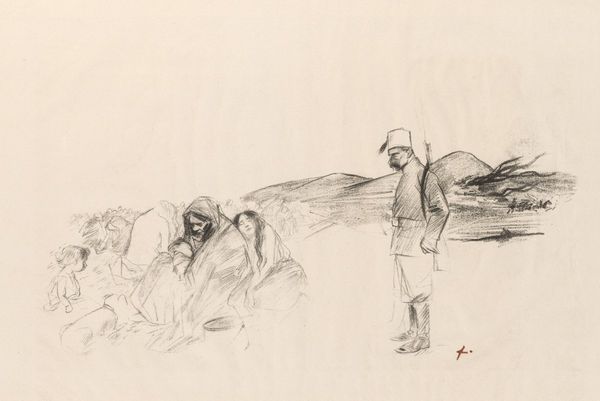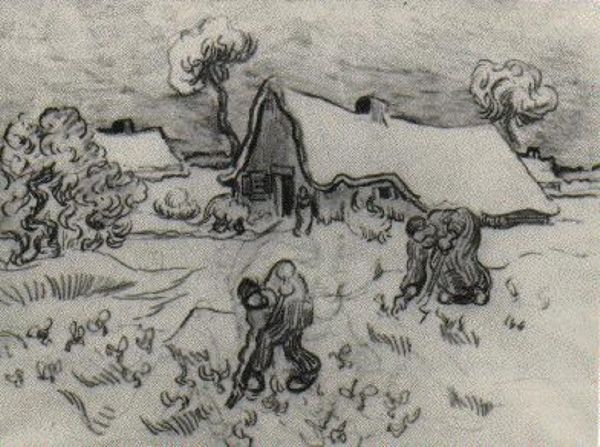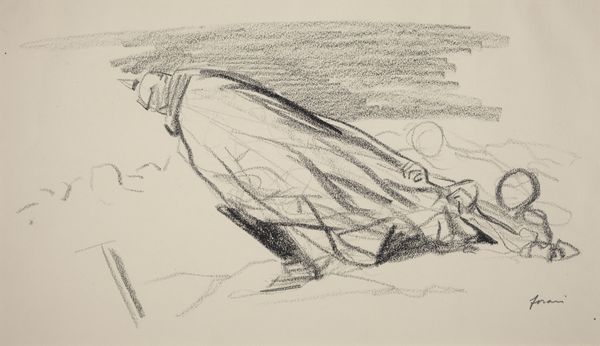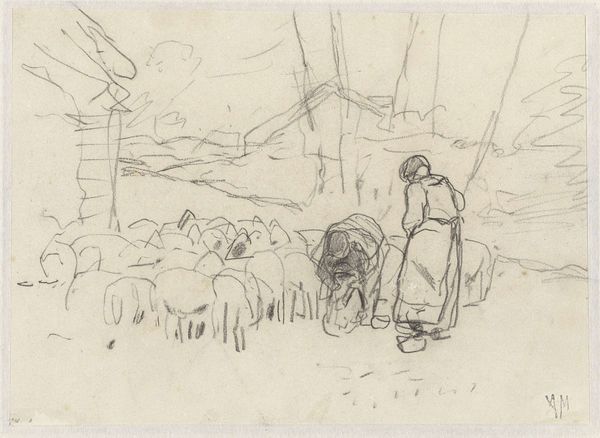
drawing, paper, pencil
#
drawing
#
pencil sketch
#
landscape
#
paper
#
pencil
#
genre-painting
#
realism
Dimensions: height 120 mm, width 230 mm
Copyright: Rijks Museum: Open Domain
Curator: This drawing, housed at the Rijksmuseum, is titled "Twee vrouwen werkend op het land," or "Two Women Working in the Field," attributed to Jozef Israëls. It was made sometime between 1834 and 1911, using pencil on paper. Editor: My immediate impression is one of quiet labor. The strokes are quick but deliberate, suggesting a landscape rendered with a sensitive economy of line. There’s an overall tonal simplicity that really sets a mood. Curator: That economy certainly speaks to the period's focus on realism and genre painting. These women, their backs bent to their labor, become symbols of a specific class and way of life, elevated through art. Notice how Israëls uses the women’s postures, the slight bowing, to represent resilience and persistence. It’s not just about what they're doing, but who they are within the societal structure. Editor: Indeed, the composition itself directs the eye to this quiet narrative. The horizon line is almost gestural, just a quick marking, so the two figures occupy the vast majority of the frame, creating an intimate focus on their task. Their positioning in the landscape and the somewhat harsh tonal gradations around the hem of their clothing speak volumes about their status, almost eclipsing the story. Curator: Consider, too, that this image operates within the visual language of the 19th century, where representations of rural life carried a distinct weight of social commentary. It implicitly acknowledges the cultural understanding of work as linked to inherent moral worth. The depiction, although spare, presents their dedication to work with reverence. Editor: I can’t help but notice that the texture created by the pencil suggests an unfinished quality, but that seems to be very important to the work's impact. The slight messiness even feels integral to capturing an honest picture of the laborers and landscape itself, as though everything were made out of and covered with dust. Curator: Absolutely. It’s fascinating how a seemingly simple pencil drawing can offer such rich commentary. By stripping away ornamentation, the core values associated with work, womanhood, and societal roles are brought forward. Editor: I concur; the power of form and line contributes immensely to the image's deeper resonance, subtly influencing how we perceive these women and the circumstances of their labor. The stark tonal arrangement almost presents an entire silent, psychological narrative.
Comments
No comments
Be the first to comment and join the conversation on the ultimate creative platform.
